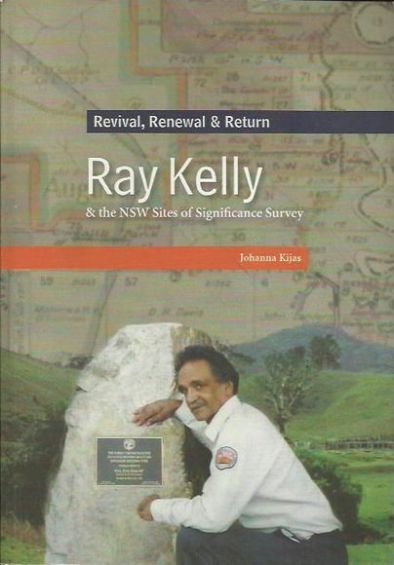By Tegan Burton, Community Archaeology Field School
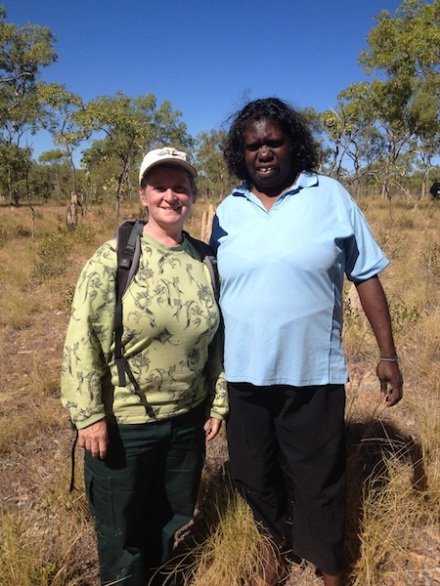
This is me and Rachael Kandino. Rachael accompanied my journey from the first day to the last at the Community Archaeology Field School in Barunga, Northern Territory, June 2014. Rachael gave me the skin name Kotjan, after her mother Lilly Willika, a very special woman to many people. So now I am Rachael’s mother too.
As our first day in Barunga drew to a close I found myself accompanying Rachael and others to a local Christian convention at the nearby community of Beswick. When we arrived the service was well underway. Although it was a cold evening everyone was seated outside, on rugs on the ground, in a large circle, with the occasional small fire amongst the seated groups. While there we saw singing and dancing, preaching and healing, with men, women and children all participating.
As I sat in the role of observer, many questions came to mind that I didn’t know how to ask. Questions about how the dance movements developed, as some appeared reminiscent of traditional dance movements. Questions about the pastor’s emphasis on the involvement of all, the whole family, when I knew already that traditional Aboriginal culture locally was highly segregated by gender and also age. And questions about personal responses to the pastor’s words of hope, support, and healing.
Those first thoughts were to become my community project topic Christianity – Our Way.
A picnic lunch by the water at Beswick Falls became the location of our first detailed conversation about Christianity, Barunga way.
From the very beginning it was clear that there can be different ideas coming from traditional Aboriginal ways and what Westerners generally consider Christian ways. However Aboriginal people are adapting their traditions and ‘can understand God through our way’ (Rachael Kendino, pers. comm. 2014).
Given the traditional Aboriginal connection to the spirit world, it is possible that Aboriginal people understand and embrace the idea of the Holy Spirit more readily than non-Aboriginal people.
Rachael feels that Christianity has brought about a community with less drinking and other drugs, and more discipline and respect. I heard this sentiment echoed by others as I collected the information needed for my community project through ongoing conversations.
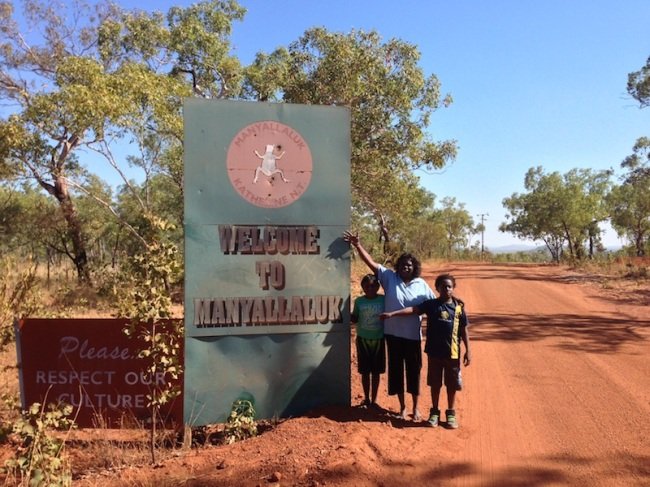
Rachael will soon be returning to Manyallaluk (also known as Eva Valley), as a practitioner for the church. As part of her church work she hopes to support the community by having barbecues and film nights, and to sell food to the community, to help them out. Rachael is keen to learn more Munanga (whitefella) way to help make this happen, if the end result can benefit community.
Like so many Aboriginal women I’ve met and worked with, Rachael is incredibly strong in spirit. She also has a great capacity to communicate with those like me – an Anglo student from the city. As my other guide in this journey, Claire Smith, said, Rachael understands a little of both ways and can see the similarities and differences.
Rachael travelled to Adelaide and undertook studies at Flinders University herself in 2011. She has a strong desire to keep on learning, all the time, and pass on what she has learnt to her children and community.
Blackfella way don’t say thank you. Whitefella way do. Thank you Rachael for accepting me in to your world, sharing Barunga, and sharing your stories of flying together, like the black crow and white cockatoo.

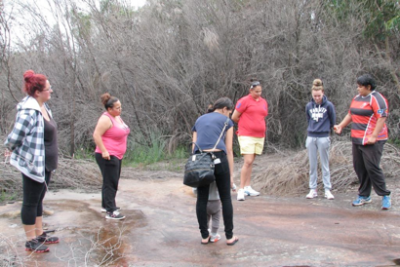



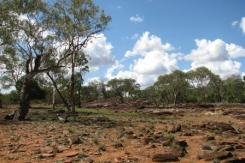 Charismatic gums in a dry river bed; the stony slopes of the Cobar Peneplain
Charismatic gums in a dry river bed; the stony slopes of the Cobar Peneplain
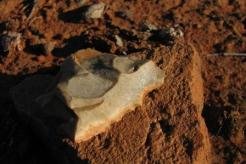 Assortment of stone artefacts found within Mount Grenfell reserve lands
Assortment of stone artefacts found within Mount Grenfell reserve lands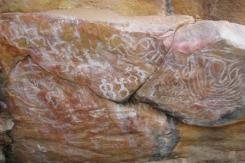
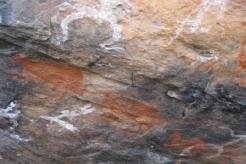 Small selection of rock art found at Mount Grenfell reserve lands
Small selection of rock art found at Mount Grenfell reserve lands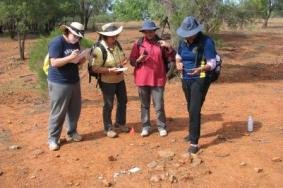 Jess, Meredith, Susanne and Hilary record a hearth
Jess, Meredith, Susanne and Hilary record a hearth
